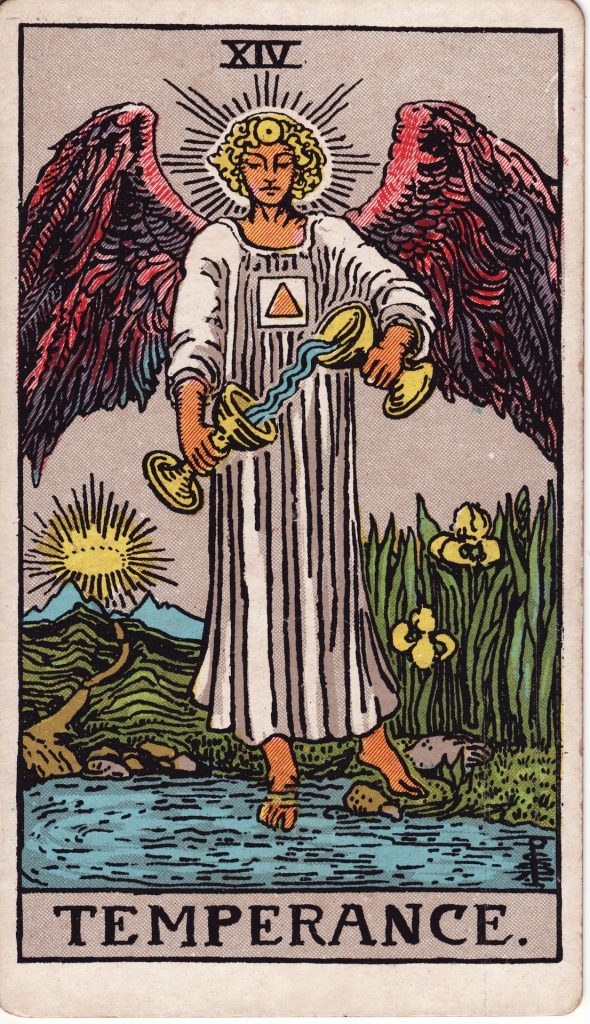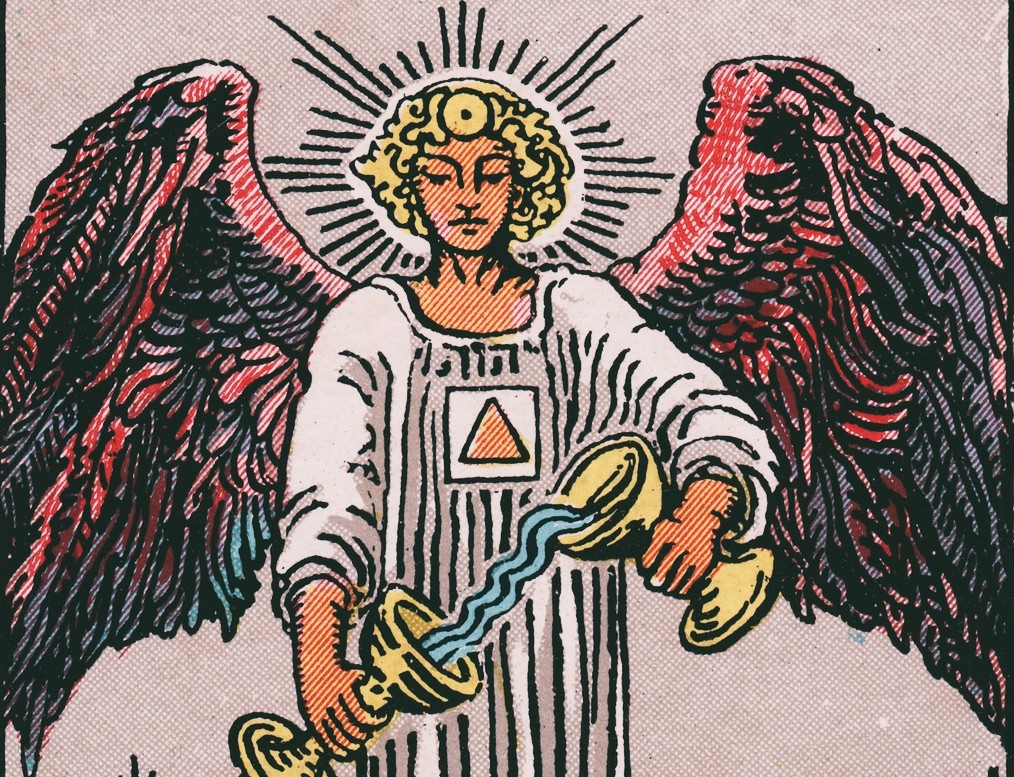Temperance is a card that has followed me around my whole life. It’s the card that has come up for me in personal card pulls more than any other, by far. It feels like it’s connected to something very deep inside me.
So, imagine my frustration when I am unable to figure out the message of the card, again and again. The meaning alluded me completely.
Initially, I associated Temperance with the temperance movement, so, avoiding alcohol. Therefore, temperance must be about avoiding your vices, I thought. Maybe it’s about moderation in a big-picture sense, and completely avoiding some things and behaviors is a part of that.

This understanding helped me to see that there is some sort of moral compass inherent to the universe, and that there is a right and a wrong way to approach spirituality. I flirted with ideas of abstinence from sex, from alcohol, from certain types of food; and when I inevitably was not able to maintain my unrealistic ideal behavior (based in what? nothing, really), I decided that I must just not be good enough or have a strong enough will to engage with spirituality. Healthy.
Then, some years later, I started to understand Temperance as the fulcrum of the scales of Justice. Temperance came to represent the middle way, a sort of perfect point of balance. This mostly became an unachievable ideal (again) that I looked up to and, ultimately, became disillusioned by. Instead of seeing the world as black and white, I saw a third option; not shades of grey, but one shade of grey directly between the black and the white. I didn’t have to be an alcoholic or never drink again! I could simply drink exactly the correct amount at any given occasion! Flawless logic.
Recently, though, I happened up another scrap of meaning that kind of revolutionized this card for me.
In his book The Tarot; History, Symbolism, and Divination (2005), author Robert M. Place says of the card,
“The sea and land are also the alchemical wet and dry, symbols of the outer and inner world. The triangle in the square on Michael’s [the angel’s] chest is a symbol of spirit contained in matter.” [p. 205]
This made me realize that Temperance is not a set of “shoulds” to get to the middle way. Instead, it’s an invitation to marry your inner and outer selves.
This really spoke to me. My inner and outer selves have always been worlds apart. For some reason, I was always deeply ashamed of my spiritual life, from a very young age. I enjoy my spiritual life and find it fulfilling, but any other person even knowing about that really grossed me out. Practices like wicca appealed to me, in part, because of the importance placed on secrecy. I used this secrecy to avoid discomfort.
After I spent several weeks meditating on the marriage of these different selves, I came to the conclusion that I don’t need to permanently combine all these parts and be a solely authentic honest person every minute of every day (can you imagine?), but instead, I think the medicine here is to engage with and get to know each part of myself as a part of the whole.
Each part will be necessary to come forward at different times in my life, and it’s that fluidity of the self that is essential to understand here.
I exist as a unique individual who is part of the whole, but who also contains multitudes. I am The Forest Wizard, but I am also a community of wizards, of librarians, of depressed lumps, of cringy losers, of ethical sluts…an endless ever flowing river of parts that, almost like a rubix cube, move and change and morph into what appears to be a stationary and static Self.
Yes, our physical body is, in its own way, a microcosm of the universe. The systems and complexities and microscopic worlds within us. But our minds, too, our minds are full of more parts than we can ever catalog.
E pluribus unum
Out of many parts, there is one ever-changing Self. Embrace the movement, the fluidity, the heat of it all.

Leave a Reply